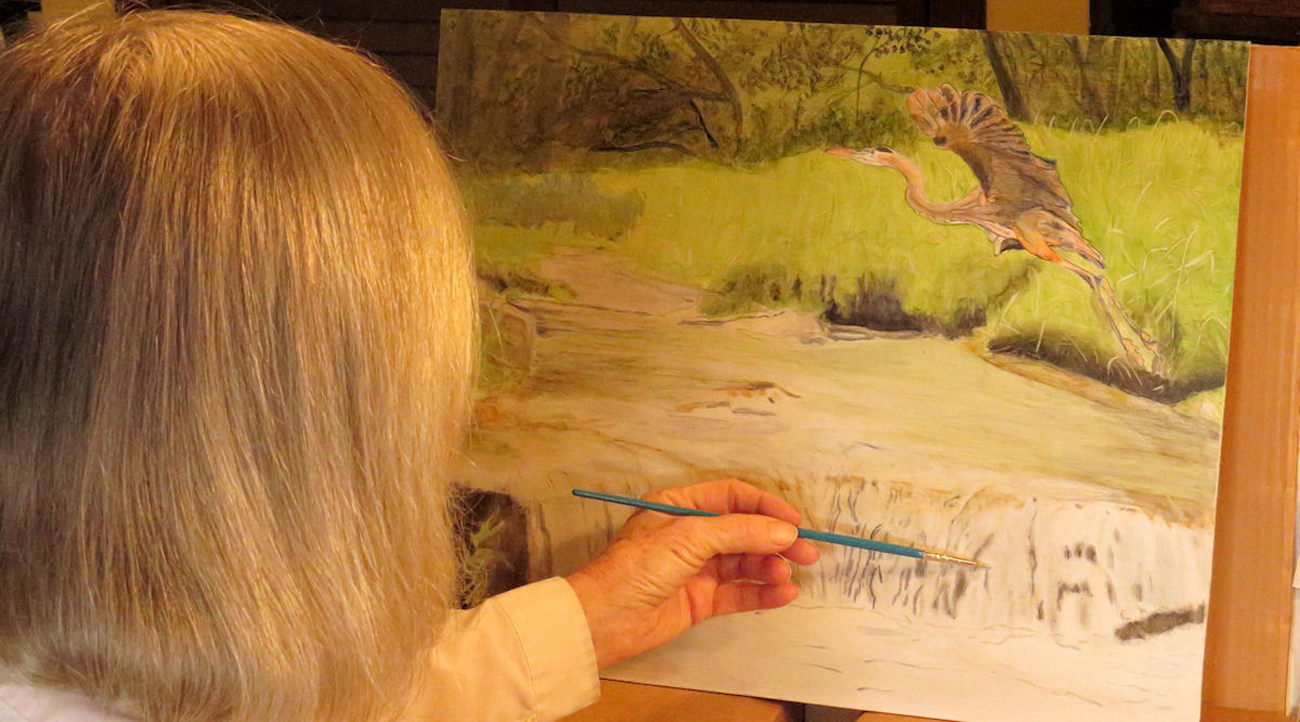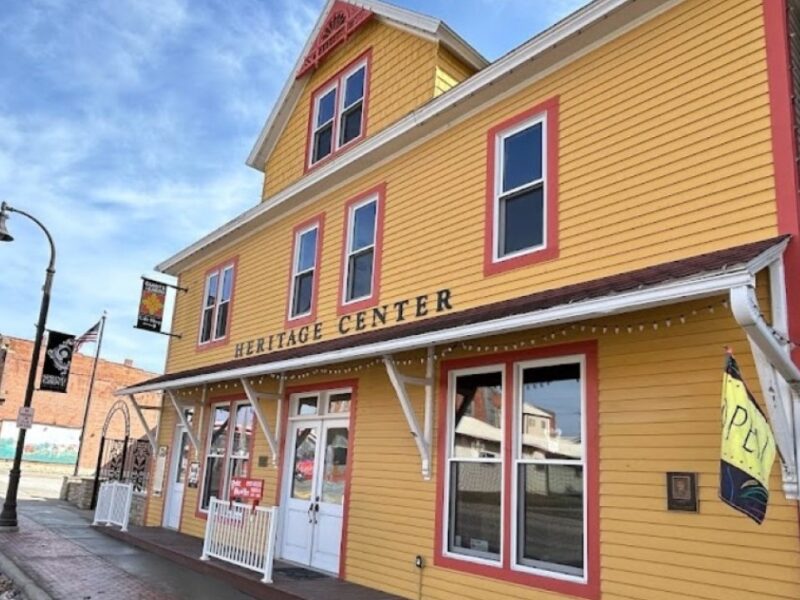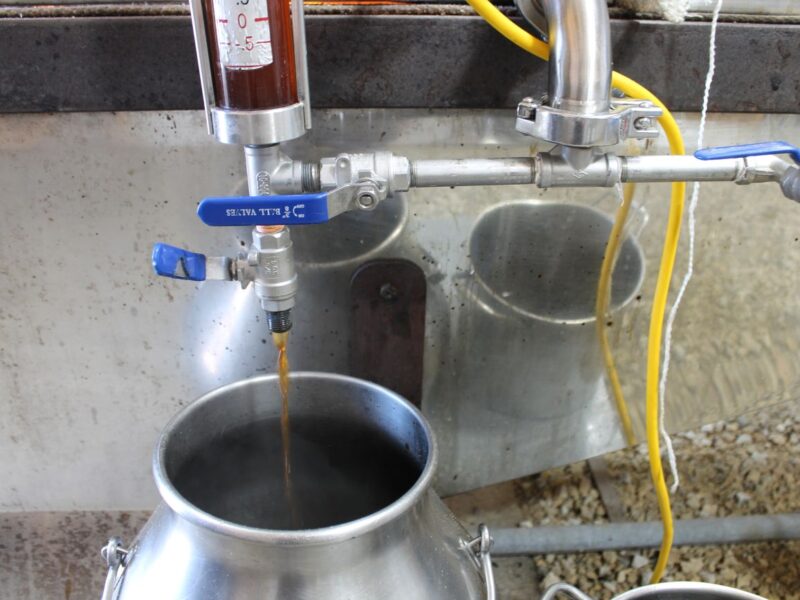Inspired by nature, artist Rita LeDuc prefers painting with traditional oil paints. (All images courtesy of Rita and Paul LeDuc)
Paint Where We Live, Live Where We Paint
Artists Rita and Paul LeDuc focus on landscapes, nature and wildlife
FOUNTAIN — Rita and Paul LeDuc consider themselves American Nature Painters. But it took the two self-taught artists many years to develop their artistic passions.
Paul was born in Montana and lived in Bemidji when he was very young. Then his family moved to Austin and eventually to Winona. Before he was born, his mom taught at a one-room grade school in the 1930s.
“The only place she could get a job was down in southeastern Minnesota,” Paul says. “She actually taught in a (Fillmore County) school that was about six miles from where we live now. She remembered the names of her students even when she was in her nineties and some of those people were still living in the Lanesboro area. It’s a small world in some ways.”
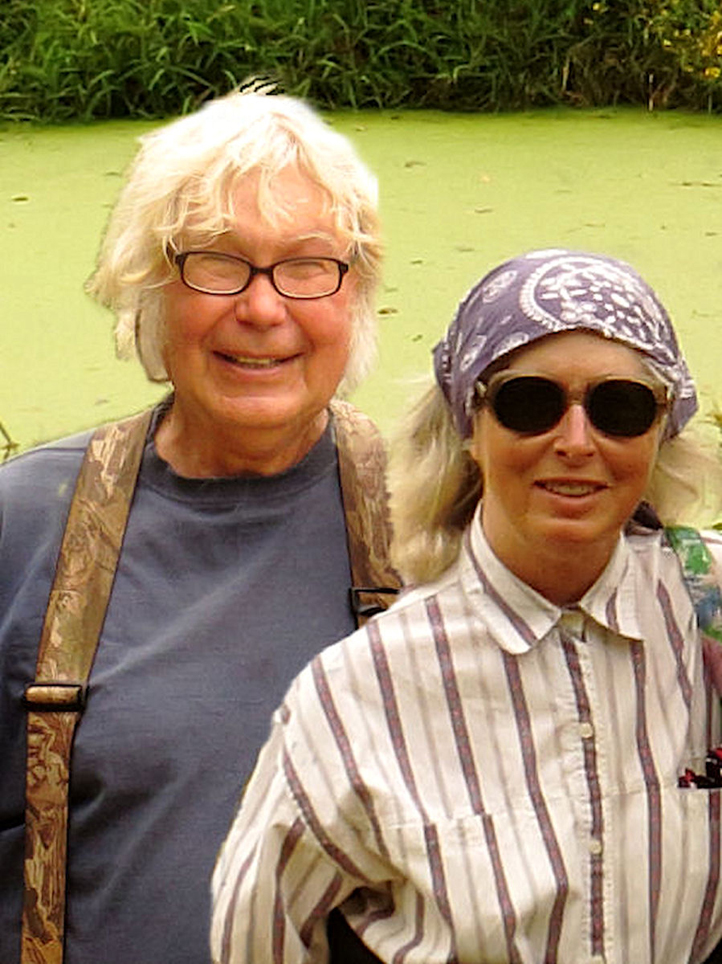
Paul and Rita LeDuc pictured near western Wisconsin’s Trempealeau National Wildlife Refuge. The LeDucs regularly visit nature preserves to get ideas for their paintings.
Rita grew up about thirty miles northeast of Rochester. She had some art classes when she was in grade school and made art at home.
“My mom bought me some paint by number kits for Christmas presents and I loved them,” recalls Rita, “but I didn’t follow the directions, and I can remember her taking them to my dad to say, ‘Look, she’s mixing her own paints.’”
That was her first introduction to working with oil paints. But Rita didn’t pursue painting again until much later in life.
Paul did a lot of drawing in high school, but didn’t take any formal courses because the school that he attended didn’t offer any. He began college in Winona then switched colleges before ending up at the University of Minnesota in 1964. That’s when Paul first started to paint. He said his dad really encouraged him and thought it was just great.
“I look at it now and I think, ‘oh, my god, you know, it was horrible stuff,’” Paul says.
While in the army in Georgia and Tennessee, Paul became interested in wildlife. He knew then he wanted to come back after military service to southern Minnesota and its wonderful wildlife.
Paul remembers, “I was probably five years old when I first saw southeastern Minnesota and I absolutely fell in love with it. I couldn’t believe the hills and the valleys and the trees and the wildlife. It was just gorgeous. I have no regrets about spending my life here.”
Rita received her biology and chemistry degrees from the College of St. Theresa in Winona. Paul returned to Minnesota to finish college and met Rita who spent some time at Winona State University.
The pair got married and did a little painting the first few years they were married. But then that kind of went by the wayside because they were both biology majors and Paul went on to graduate school in Duluth. While the couple lived in Duluth, Rita worked at the National Water Quality Lab.
Rediscovering Painting
The couple bought a farm in rural Fillmore County — southeast of Chatfield, northeast of Fountain — where they still reside.
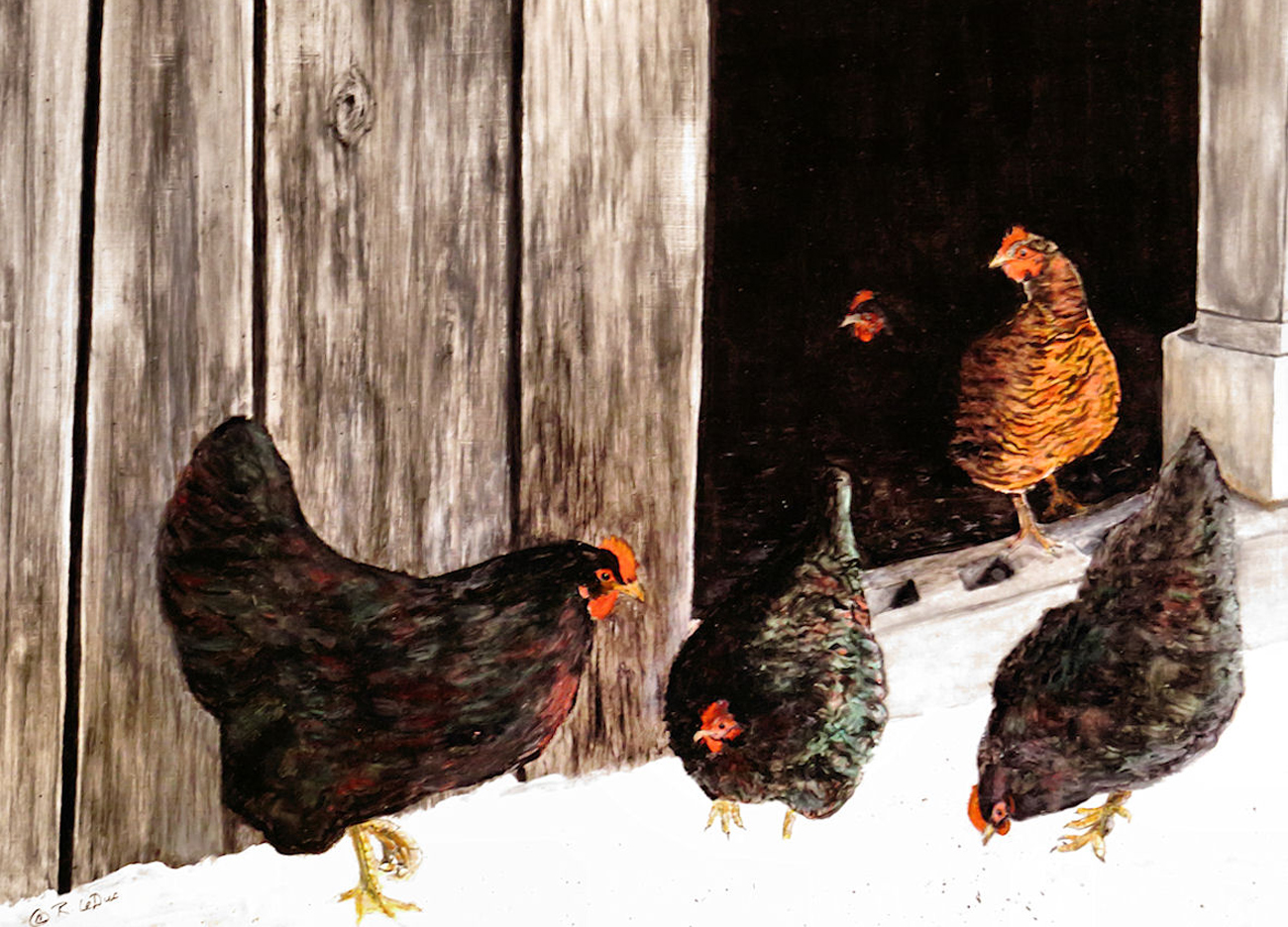
This painting by Rita LeDuc, “Chickens in Winter,” was inspired by activity on their farm northeast of Fountain.
Around 1978, Rita and Paul started growing fruits and vegetables and began farm marketing. They found that it was a really good way to make a living in the summer and gave them freedom in the winter for art.
Rita told a story about a time her mother came down to their farm with all kinds of paints: oil paints and brushes, everything except the supports for painting on.
“We have a fairly small house and I said to her, ‘Mom, you know for anything that comes into the house we have to send something out because we’ve only got so much room,’ and mom looked at me and said, ‘Rita, I know you love to paint and if you don’t paint and use these then Paul will.’”
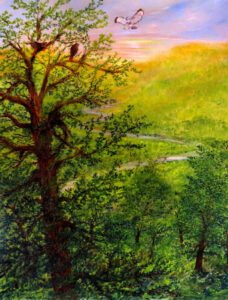
This natural setting near a highway rest stop was the focus of the painting “Along I-90” by Paul LeDuc.
So, Rita put them on a shelf in her storage room and they stayed there for about five years.
Her mother passed away in the interim and one day while Paul was down in the woods watching for wildlife, Rita saw the two big boxes, pulled them down and thought, “Well, I’ll just see what I can do with these.”
She had a blast and in 2015 seriously started to paint. But she didn’t know much about the media or the process.
This led her to a public library. “Rochester has such a wealth of information in its library and I read every single book I could possibly have the time to read.” In addition to libraries, she visited galleries, too.
“Winona’s Minnesota Marine Art Museum is pretty inspirational, the Hudson River artists are some of my favorites,” Rita says.
The couple has also been to quite a few of the region’s nature centers, including the Trempealeau National Wildlife Refuge in western Wisconsin. This is where Rita and Paul get ideas for paintings; it’s a great place to see a lot of different wildlife.
The two artists give, what Paul calls, “friendly criticism” to each other’s art. Rita offers her advice and opinion to Paul, and Paul offers the same to Rita. The key is they really listen to each other, and it makes the whole painting process more interesting for them.
Though Paul does say, “Sometimes we’ll look at each other and say, ‘Nope. It’s my painting. I’m not going to change it.’ We do that all the time.”

“Transient Treasures” by Rita LeDuc, recipient of grants from the Minnesota State Arts Board and the National Endowment for the Arts.
“Paint where we live, live where we paint,” Rita explains.
This means landscapes, a lot of animals, wildlife, nature, and a few portraits. Paul works primarily with alkyd oil paints and Rita uses more traditional oil paints.
“Alkyd oil paints dry faster than a traditional oil paint,” Rita adds, “so I’ve got more time to putz around before I have to be done.”
Rita believes that traditional oil paints are actually the easiest art media because you don’t have to rush the process.
Exhibitions
Rita’s first exhibition was in a Lanesboro Arts’ group show. Paul had warned her, “Rita, you’re not an artist. Keep it a hobby. If you think that you’re going to be an artist it’ll seem like work, you won’t like doing it.”
For her, the exhibit was an opportunity to meet other artists in the region and see what other people were working on. It was pretty inspirational for her to be a part of that. It was even more inspirational for Paul because Rita entered three paintings and two of them sold.
He looked at that and thought, “If she can do it, I can do it.”
Rita agrees. “That’s exactly what he said to me on the way home, ‘Well if you can paint, then so can I.’”
Art Classes, Inspiring Others
Mike Speck at the Chatfield Center for the Arts (CCA) indicated that he would really like to get some classes going so that’s how they began teaching classes. It’s been several years since they started teaching.
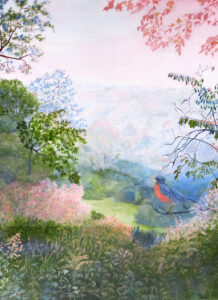
“Dawn of a New Day” by Rita LeDuc. An exhibition of Rita and Paul LeDucs’ art will be on display at the Chatfield Center for the Arts in November and December.
In addition to Chatfield, they have taught at Rochester Public Library and Winona Public Library.
“Those were all Rita’s ideas, I have to admit,” says Paul.
Rita responds, “I have a teaching background, so it was a natural thing for me.”
The LeDucs give their students the freedom to use any colors they want or change a scene to make it their own. They start with an acrylic underlay on the surface of a board and they teach everyone to paint with water mixable oils.
“The water mixable oils are a whole different ball game for working with than the traditional oils,” Rita explains.
Rita and Paul’s students don’t just create, they also exhibit. The Chatfield Center for the Arts had a Student Showcase on display during September and October of this year with works by people who attended the LeDucs’ classes.
“They did a nice job,” Rita says. “They’ve got a really nice exhibit; I think there’s some thirty to thirty-five items.”
Rita and Paul had an exhibition of their own at CCA that opened in the middle of December 2023 and remained on display until the middle of March 2024. They received a lot of exposure and CCA asked them to do it again this winter. Their new show will on view beginning in November, continuing through December.
They have propagated a budding art group right in Chatfield and they have people come from St. Charles, Rochester, and Winona to join their classes.
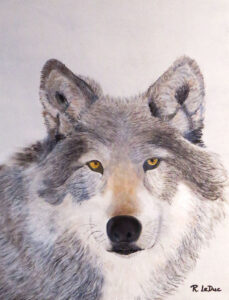
Rita LeDuc’s work is often focused on wildlife, including this painting, “Wolf in Winter.”
Rita is a fiscal year 2024 recipient of a Creative Individuals grant from the Minnesota State Arts Board and a grant from the National Endowment for the Arts.
She will be having a new kind of workshop in November and December, offering classes for people that are artists or have some arts background and experience, rather than beginners.
These classes will start with what Rita calls, “file work or paperwork for artists.”
Things like how to write a biography, how to write an artist statement, how to keep track of the work that you do, how to set up a database, and how to write a news release.
Then she’ll be doing more advanced painting classes on perspective, shadows and reflections, brushwork, preparing boards, and using glazes. But these are suggested for people who have some kind of painting experience already.
If you’re a novice, in January, February, and March, Paul is planning to offer a whole series of classes on three Saturdays a month, for a total of nine classes. He’s going to run them like a workshop where he will demonstrate how he would create a painting and then allow people in the class to follow his lead or create their own painting.
“I’d like to see people get well grounded in how to make a painting,” he says, “then they can go on their own and improvise from there.”
All of the classes are free (the LeDucs do ask that attendees bring an item for the local food shelf), open to all ages, all talents, all abilities, and all the materials are provided. Chatfield Center for the Arts offers online descriptions and registration for all of their art classes.
LeDucs’ winter exhibition can be viewed in the gallery at the Chatfield Center for the Arts during November and December 2024; an artists’ reception will be held on Friday, December 15.
…………………
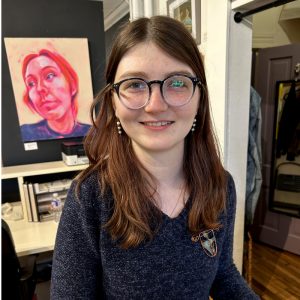 Contributor
Contributor
Delia Bell is an artist, apprenticing as a potter, who recently received an emerging artist grant from the Southeastern Minnesota Arts Council. She resides in Lanesboro.
Root River Current’s coverage of the arts is made possible, in part, by the voters of Minnesota through a grant from the Southeastern Minnesota Arts Council thanks to a legislative appropriation from the arts & cultural heritage fund.


